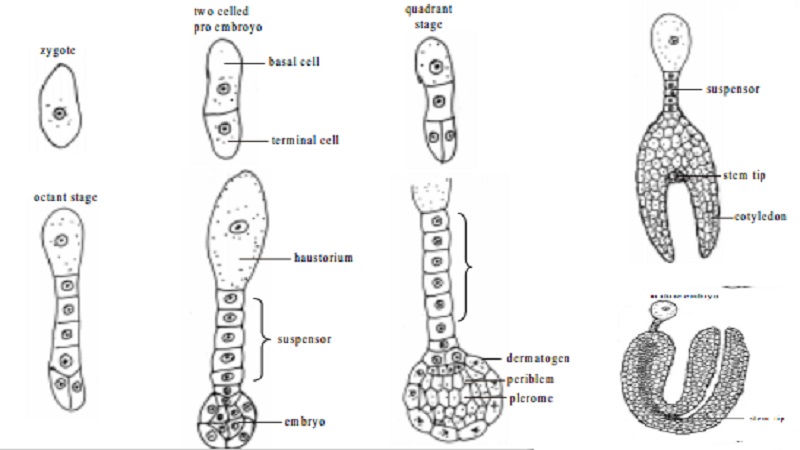Chapter: 11 th 12th std standard Bio Botany plant tree Biology Higher secondary school College Notes
Development of dicot embryo

Development of dicot embryo
The zygote divides transversely to form a
two-celled proembryo. The cell towards the micropyle is known as the basal cell
and the other is known as terminal cell.
The basal cell undergoes several transverse
divisions to form a long suspensor.
The terminal cell divides longitudinally twice to form four cells. This
four-celled stage of terminal cell is called quadrant stage. The four cells of the quadrant stage now divide
transversely to form an octant stage
of eight cells arranged in two tiers of four cells. The lower tier gives rise
to the stem tip and cotyledons, while the upper tier is meant for the formation
of hypocotyl.
This is followed by periclinal division in
the octant cells to give rise to eight outer cells, and eight inner cells. The
eight outer cells form the dermatogen,
which divide anticlinally and develop into the epidermis. The inner cells form the periblem and plerome.
The cortex develops from the periblem and stele from the plerome. The basal cell divides several times to form a long
suspensor of six to ten cells. The lowermost cell of the suspensor nearest to
the developing embryo is known as hypophysis.
The hypophysis, by repeated divisions, gives rise to root cap, epidermis and
cortex of the root.
Further enlargement of hypocotyl and
cotyledon result in a curvature of the cotyledons. The embryo at this stage
appear as a horse-shoe shaped structure. In the mature embryo, the stem tip is
terminal and the two cotyledons occupy the lateral position.
Related Topics